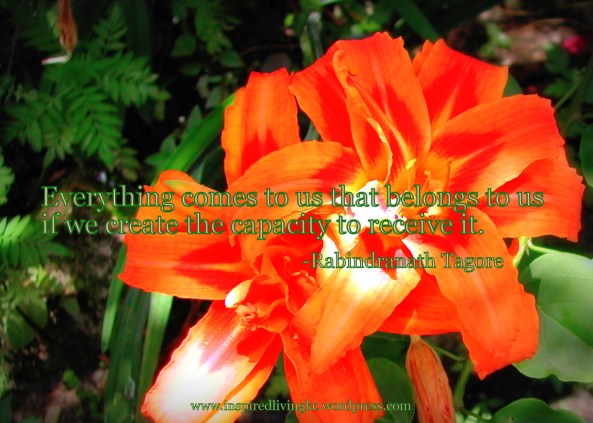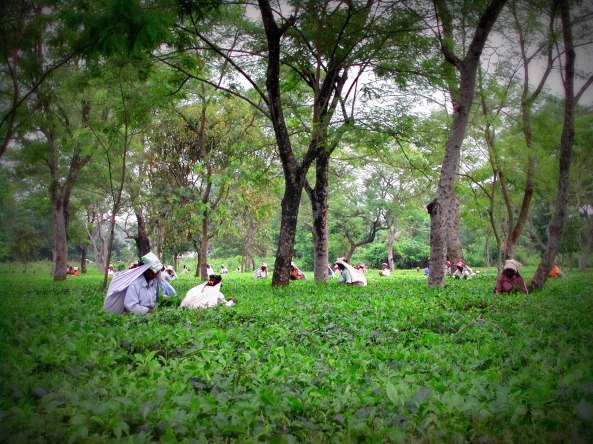By this time in our Indian travels I was as accustomed as I could get to standing out in the crowds. I did my best to be respectful of the culture, be polite and not act as though my values were better than what I was observing around me. I was also feeling more comfortable and safe in my foreign surroundings, even with a language barrier I was gaining sense of who was trustworthy and who was trying to take advantage. We had been cautioned before the trip and learned a lot during the month about Indian men – not all Indian men are this way! We had been told when walking in crowded areas to cover our chests so they wouldn’t be grabbed, one of us could have also used a warning about watching her behind as it got slapped by a man on a moped. We studied the disparities between the laws to provide women with rights/protection and what actually happens with Indian marriages, abuse of women and trafficking. http://inspiredlivingkc.wordpress.com/2012/06/25/grassroots-for-women-children/
Our final excursion from Kolkata, during the month in India, was to Puri for beaches and temples. Our instructor traveling with us from the U.S. was exhausted from the month’s adventures and hosting the students so she sent us with our Indian tour guide Amrit. He had traveled with us on another trip to Darjeeling and on some sightseeing around the city. (https://inspiredlivingkc.wordpress.com/2012/06/25/one-weekend-not-long-enough-darjeeling/). “Come, come please.” He would scurry us along like his little ducklings down sidewalks or through the train station “Come, come.
 Our hotel in Puri was right on the beach and ocean fun was exactly what we needed after sweltering in the Indian summer temperatures. It was slightly confusing for a group of American girls to prepare for what to wear to the beach and for swimming since India is modest and Indian women keep covered. While many of us had bathing suits, we all kept clothed with pants and shirts for our water recreation.
Our hotel in Puri was right on the beach and ocean fun was exactly what we needed after sweltering in the Indian summer temperatures. It was slightly confusing for a group of American girls to prepare for what to wear to the beach and for swimming since India is modest and Indian women keep covered. While many of us had bathing suits, we all kept clothed with pants and shirts for our water recreation.
Amrit reported there to be a dangerous undertow right off the shore and hired 3 lifeguards for protection. These men were no Baywatch studs, middle-aged and scrawny, these lifeguards wore shelled cone hats tied to their heads in order to specify their hired rescuer status. The guards stood over the American girls in the water and quickly put a hand on their bodies, even with no legitimate threat of drowning. Once I saw this happening I chose to only dip my toes in so I could avoid unnecessary wandering hands.
 Just being near the ocean and out of the city of Kolkata was wonderful. We spent all afternoon breathing in the sights and sounds of the beach for a change. As with so many beaches there were people who approached trying to sell something. Some of us bought necklaces, massages and even rides on a decorated camel.
Just being near the ocean and out of the city of Kolkata was wonderful. We spent all afternoon breathing in the sights and sounds of the beach for a change. As with so many beaches there were people who approached trying to sell something. Some of us bought necklaces, massages and even rides on a decorated camel.
During our stay in Puri there was a restaurant down the beach from our hotel called “The Pink House.” The eatery was a patio area covered with a thatched roof. They served fresh fish and had a mural of Bob Marley on one wall. From where we ate there was a picturesque view of a gate towards the ocean.
 Beyond the beach in Puri, we went into the market area for shopping. And getting the chance to be tourists instead of students for the weekend, we chose tourist type activities like taking a boating excursion on Chilika Lake with over 200 dolphins living in it. Our boat of caucasian females quickly became the attraction on the lake and while our cameras were aimed at the surfacing dolphins, the other boating sightseer’s had their cameras pointed at us. http://www.go2india.in/orissa/satapada.php
Beyond the beach in Puri, we went into the market area for shopping. And getting the chance to be tourists instead of students for the weekend, we chose tourist type activities like taking a boating excursion on Chilika Lake with over 200 dolphins living in it. Our boat of caucasian females quickly became the attraction on the lake and while our cameras were aimed at the surfacing dolphins, the other boating sightseer’s had their cameras pointed at us. http://www.go2india.in/orissa/satapada.php
Our other tourist activity was visiting the temples and ruins around the area.
During our stay in Puri we were invited by Amrit’s friends to come for lunch. I don’t remember thinking too much about the invitation before we arrived. We arrived at an apartment on the beach where there was a small kitchen with a cook preparing our meal. We were chauffeured into a bar area with swinging doors and crab netting hanging from the walls for sailor themed decor. Our hosts encouraged us to sample the Indian beer and mix drinks however we desired. Finally a chance to relax with a few beverages and my new fellow student friends, or so I innocently thought at first.
As we settled in and began socializing with our hosts my curiosity lead me to wonder why we were really invited over? Turns out Amrit’s friends were two well-off men from the city staying at their beach apartment where they travel to on weekends. The men were likely the same age as the fathers of most of the students in our group, and both admitted they were married. One man proudly stated the apartment is off-limits to their wives. At this point I quietly put down my beverage and tried to reserve my judgments for the remainder of the visit. Did these men think they had won the jackpot with eight promiscuous American women in their bachelor pad? Did they think I was a Pretty Woman who stepped out of American Pie to act out my Basic Instinct?
Though I sensed it to be odd, nothing happened during lunch to confirm my suspicions. However, Amrit scheduled another meeting with these men before we headed back to Kolkata the last day. This time we were to meet them at their country club. When we entered the building, we were greeted by Amrit’s friends and some head people at the club including a president and manager. Confusion set in, in my mind we were just students, nobody important enough to draw attention from important people…
Our group moved upstairs to a room where we would be eating lunch. Us students observed the room quickly and looked at each other, the bathroom and closet as you entered the room along with two headboards nailed to one wall indicated this was a hotel room. The furniture had been cleared out and large clothed tables had been put in place for the meal. More guests began filing in and man after man introduced himself to us, soon the men out numbered our group of female students. Similar to the meeting before alcoholic beverages were encouraged, except this time most of us declined. Concerned by the hotel room and all male company, one of the girls asked Amrit to clarify what “country club” meant to Indian’s. He informed us that Indian clubs sometimes have golf, pools, tennis and other sports along with rooms to stay (sort of like buying a timeshare to a hotel/resort.)
During the meal we did our best to make small talk with our hosts, some of the men hardly spoke English or were very difficult to comprehend. Finally when the visit was over we all made our way out to our awaiting vehicles. One of the hosts from the country club came running out after us to ask if everything was okay because he had seen a trail of blood. All of us looked around assuming it was unrelated to us, except the last student to get into the vehicle. She hadn’t realized she was bleeding despite a heavily dropping cut. It wasn’t until the country club was in the rear view mirror when she finally explained what had happened.
Before we had left the building, one by one we used the restroom and then trickled outside towards the vehicles. She was the last student and regrettably none of us realized we had abandoned the buddy system and left her inside. One of the male guests from our lunch tried to corner her and kiss, she reacted in a haste and somehow managed to cut herself on the door in her escape.
Five years after my travels to India I am still trying to understand what that lunch, with grown men in an empty hotel room was all about. Their intent in the invitation was unclear. I feel conflicted between what my obvious fear was during the day, and not wanting to unnecessarily judge a situation to be negative out of fear. I guess part of me just wants to hang on to hoping people I encounter are honest and sincere towards me.
Puri was quite an adventure. The Indian beaches and temples were worth the trip, though, we were not American whores.
This post is part of a series I am writing about my month abroad in Kolkata, India to study the social welfare systems. Feel free to look back on previous posts – here are a few:
https://inspiredlivingkc.wordpress.com/2012/05/23/my-indian-summer/
https://inspiredlivingkc.wordpress.com/2012/05/27/step-one-assimilation-to-traffic/
https://inspiredlivingkc.wordpress.com/2012/06/03/lessons-in-love-the-mother-teresas-homes-kolkata/
https://inspiredlivingkc.wordpress.com/2012/06/13/when-it-rains-it-floods/



















































